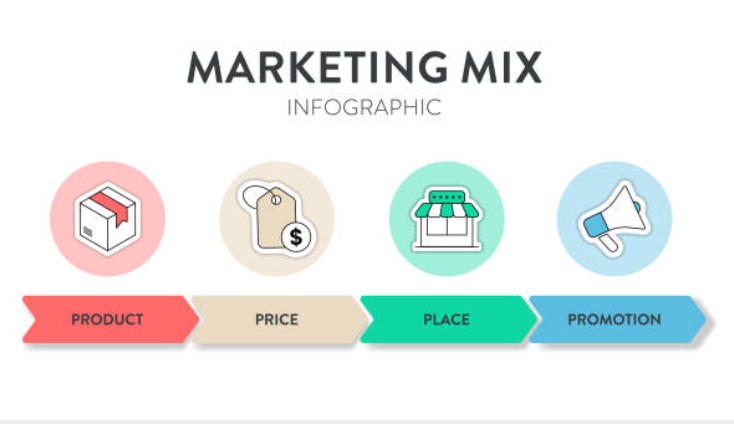What Are the 4Ps of Marketing? A Breakdown of the Fundamentals
Last Updated on
Have you ever stopped to ask yourself, What Are the 4Ps of Marketing? This timeless concept forms the backbone of successful marketing strategies and is as relevant today as it was decades ago. For UK small businesses and budding entrepreneurs alike, understanding these fundamentals can transform the way you approach your market, attract customers, and ultimately drive growth.
Why Do the 4Ps of Marketing Matter in Today’s Business Landscape?
In a world where consumer expectations are constantly evolving, the basics remain surprisingly steadfast. The 4Ps—Product, Price, Place, and Promotion—offer a clear framework that guides businesses in crafting a balanced and effective marketing strategy. These elements are interdependent, meaning that a change in one can have a ripple effect on the others.
For example, setting the right price for a well-designed product, available in the right places, can make the difference between a marketing success and a missed opportunity. In essence, the 4Ps are not just academic theory; they are practical tools that help your business connect with your target audience and build lasting customer relationships.
What Are the 4Ps of Marketing and How Do They Work?
The 4Ps of marketing were introduced by E. Jerome McCarthy in the 1960s, and despite the evolution of marketing techniques, they remain highly relevant today. Let’s break down each element to see how they interact and contribute to a comprehensive marketing strategy.
Product: What Are You Offering to the Market?

This is the heart of your offering. Whether you’re selling a tangible item, a service, or even an experience, your product needs to satisfy a specific need or desire in the market. In the UK’s competitive landscape, differentiation is key.
Your product should not only be of high quality but also possess unique features or benefits that set it apart from the competition.
Price: How Much Should Customers Pay?

Price isn’t just a number—it’s a reflection of your product’s value and your positioning in the market. Striking the right balance is critical; charge too little, and you risk undervaluing your offering, but charge too much, and you might alienate potential customers.
For many small businesses, carefully analyzing competitor pricing and market demand helps in setting a price that is both competitive and profitable.
Place: Where and How Will Customers Access the Product?

This component deals with where and how your product reaches the customer. In today’s digital age, the definition of “place” extends far beyond physical stores. For a UK audience, this could mean a combination of high-street presence and robust online channels.
Choosing the right distribution channels ensures that your product is available where your customers are most likely to look for it.
Promotion: How Will You Communicate Your Message?

Even the best product, offered at an ideal price and available in the right place, will fall flat if customers aren’t aware of it. Promotion encompasses all the activities you undertake to communicate the benefits of your product to your target market.
From traditional advertising methods to modern digital strategies like social media and content marketing, effective promotion is about crafting a compelling message that resonates with your audience.
How Can Understanding the 4Ps Enhance Your Business Strategy?
Imagine launching a new product without fully considering one of these crucial elements—it’s like setting sail without a compass. The integrated approach of the 4Ps ensures that every facet of your marketing mix works harmoniously. Here’s why this framework is indispensable:
- It forces you to look at your business from multiple angles, ensuring a comprehensive strategy that aligns with your overall goals.
- It helps you pinpoint weaknesses in your current marketing approach, allowing for targeted improvements that can boost sales and customer engagement.
By systematically addressing each “P,” you create a resilient foundation that not only appeals to customers but also stands the test of time in an ever-changing market.
What Are the Challenges in Balancing the 4Ps?

While the framework is simple in theory, the real challenge lies in the balancing act. For instance, increasing the quality of your product might allow you to command a higher price, but it could also require more strategic promotion to educate your audience on why the premium is justified.
Similarly, expanding your distribution channels (Place) can widen your market reach but may also lead to increased competition or logistical complexities. Understanding What Are the 4Ps of Marketing? This means recognizing that these elements are interconnected and must be continually refined based on market feedback and evolving business objectives.
Is the 4Ps Model Still Relevant in a Digital Age?
Absolutely. Although the marketing landscape has transformed dramatically with the advent of digital technology, the fundamental principles encapsulated by the 4Ps remain at the core of every successful campaign.
Modern marketers often integrate additional elements—sometimes referred to as the 7Ps—but the original four continue to serve as the bedrock for strategy. They provide a clear, structured approach that is particularly valuable for small businesses in the UK, where every marketing decision can significantly impact your bottom line.
In Summary: What Are the 4Ps of Marketing and Why Should You Care?
Answering the question What Are the 4Ps of Marketing? Opens up a comprehensive view of the strategic decisions that drive your business forward. From developing a compelling product to setting the right price, choosing effective distribution channels, and crafting engaging promotions, each element plays a vital role in your success.
For UK small business owners, mastering these fundamentals is not just an academic exercise—it’s a practical roadmap for navigating competitive markets and building a brand that resonates.
Embrace the 4Ps as a dynamic framework that evolves with your business, and let them guide you in creating strategies that not only attract customers but also foster lasting relationships. Whether you’re refining an existing marketing plan or starting from scratch, understanding these core principles is your first step towards sustainable growth and success in the vibrant UK marketplace.







